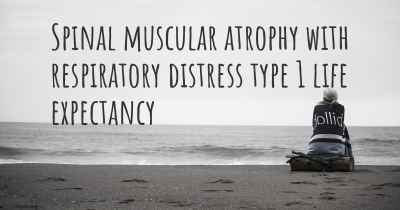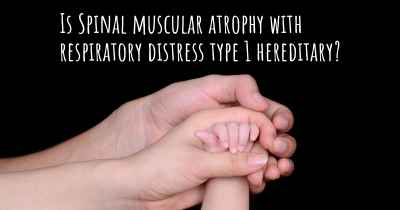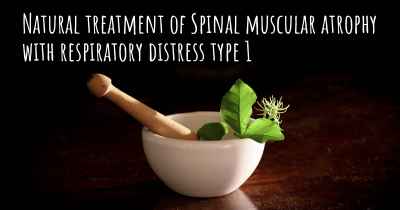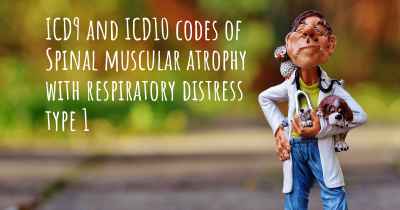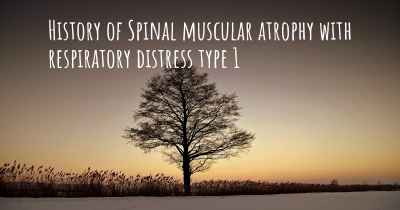Living with Spinal muscular atrophy with respiratory distress type 1. How to live with Spinal muscular atrophy with respiratory distress type 1?
Can you be happy living with Spinal muscular atrophy with respiratory distress type 1? What do you have to do to be happy with Spinal muscular atrophy with respiratory distress type 1? Living with Spinal muscular atrophy with respiratory distress type 1 can be difficult, but you have to fight to try to be happy. Have a look at things that other people have done to be happy with Spinal muscular atrophy with respiratory distress type 1
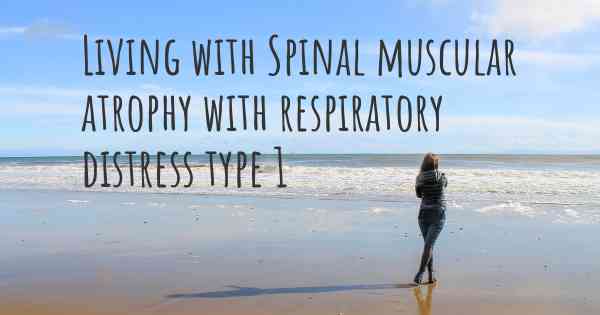
Living with Spinal Muscular Atrophy with Respiratory Distress Type 1
Spinal Muscular Atrophy with Respiratory Distress Type 1 (SMARD1) is a rare genetic disorder that affects the muscles involved in breathing and movement. It is important to understand that living with SMARD1 can present unique challenges, but with proper care and support, individuals with this condition can lead fulfilling lives.
Medical Management
Managing SMARD1 requires a comprehensive medical approach. It is crucial to work closely with a team of healthcare professionals, including neurologists, pulmonologists, physical therapists, and respiratory therapists. Regular check-ups and monitoring of respiratory function are essential to ensure early intervention and prevent complications.
Respiratory Support
Respiratory support is a cornerstone of SMARD1 management. Assistive devices such as non-invasive ventilation (NIV) or mechanical ventilation may be necessary to support breathing. These devices help maintain adequate oxygen levels and assist with clearing secretions. It is important to follow the prescribed ventilation regimen and regularly assess the equipment to ensure its effectiveness.
Physical Therapy and Rehabilitation
Physical therapy plays a crucial role in managing SMARD1. It focuses on maintaining joint flexibility, improving muscle strength, and enhancing overall mobility. A physical therapist can design a personalized exercise program to help individuals with SMARD1 optimize their physical abilities and prevent muscle contractures.
Nutrition and Feeding
Individuals with SMARD1 may experience difficulties with feeding and swallowing due to weak muscles. Working with a dietitian can help ensure proper nutrition and hydration. They can recommend modifications to the diet, such as softer foods or thickened liquids, to make swallowing easier and reduce the risk of aspiration.
Assistive Devices and Accessibility
Adapting the living environment to accommodate the specific needs of individuals with SMARD1 is essential. Assistive devices such as wheelchairs, ramps, and grab bars can enhance accessibility and promote independence. It is important to consult with an occupational therapist to assess the home environment and identify necessary modifications.
Emotional Support and Mental Health
Living with SMARD1 can be emotionally challenging for both individuals and their families. It is important to seek emotional support and connect with support groups or organizations specializing in rare diseases. Psychological counseling can provide coping strategies, help manage stress, and address any emotional difficulties that may arise.
Educational and Social Opportunities
Education and socialization are vital aspects of living with SMARD1. Individualized education plans can be developed to accommodate specific needs and ensure access to appropriate educational resources. Additionally, participating in social activities, either in-person or online, can help individuals with SMARD1 build connections, share experiences, and foster a sense of belonging.
Family Support and Advocacy
Family support is crucial for individuals with SMARD1. Families should actively engage in advocacy efforts to raise awareness about the condition and promote research for potential treatments. Connecting with patient advocacy groups can provide valuable resources, support, and opportunities to participate in clinical trials or research studies.
Future Outlook
While there is currently no cure for SMARD1, ongoing research and advancements in medical technology offer hope for improved treatments and therapies. It is important to stay informed about the latest developments in the field and collaborate with healthcare professionals to explore potential options.
Living with Spinal Muscular Atrophy with Respiratory Distress Type 1 requires a multidisciplinary approach, including medical management, respiratory support, physical therapy, nutrition, assistive devices, emotional support, education, and advocacy. By addressing these various aspects, individuals with SMARD1 can lead fulfilling lives and overcome the challenges associated with this rare genetic disorder.
